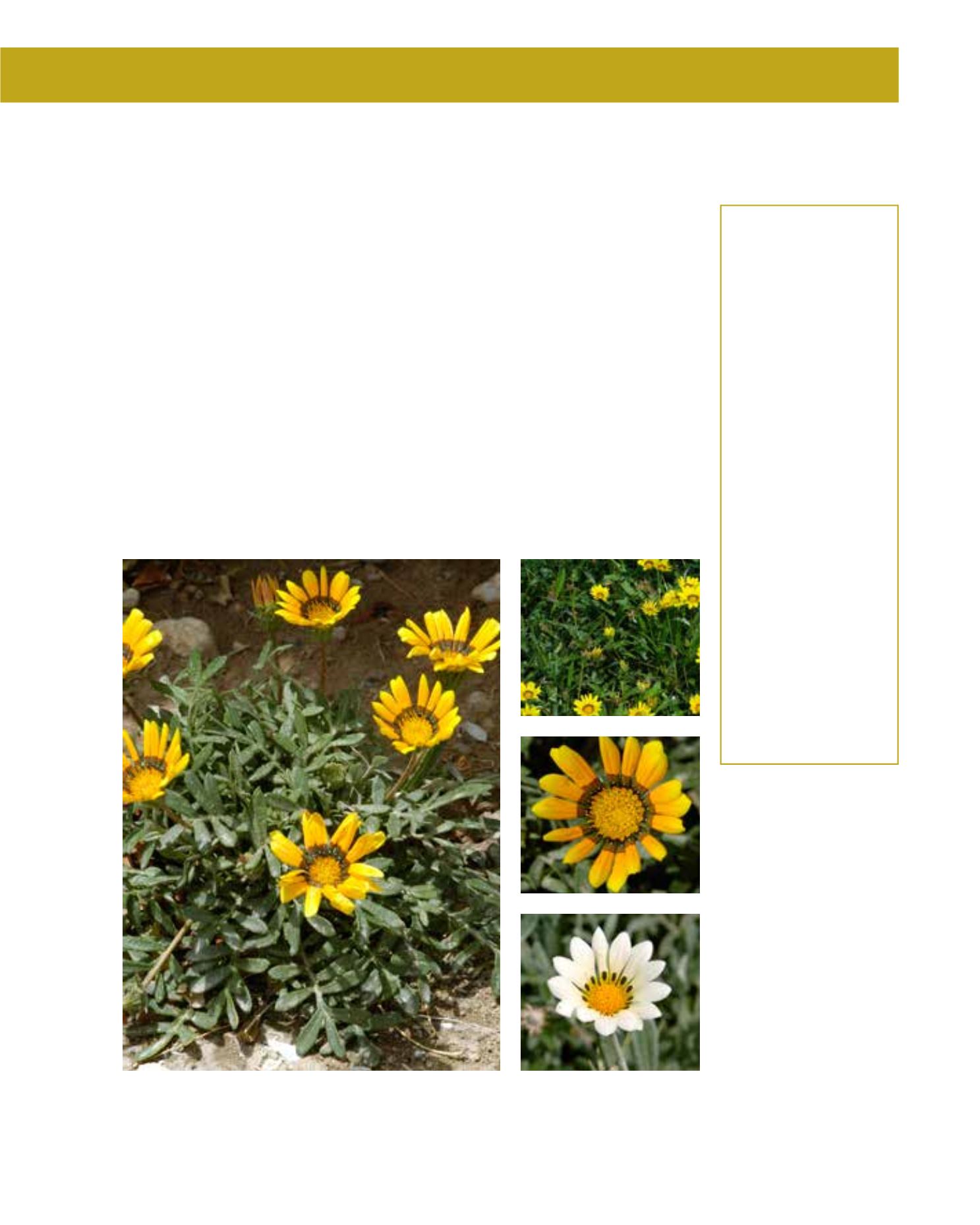

GENERAL
Origin
:
Mediterranean,
sub-tropical,
tropical
Vigour
:
fairly fast
growing
Humidity
:
semi-arid, semi-
humid
Propagation :
sowing and
pricking out,
cuttings, division
Maintenance :
moderate
CONDITIONS
Urban climate :
resistant
Dessication :
resistant
Stagnant water :
vulnerable
Irrigation
:
medium
Salinity/ppm :
moderate (2500
ppm)
Hardiness
:
-9°C
SHAPE
Type
:
perennial,
biennial, annual
Height
:
0.15 m-0.3 m
Spread
:
0.4 m-1.2 m
Foliage
:
evergreen
FLOWER
Colour
:
yellow, orange
Size
:
4 cm - 8 cm
Period
:
March - August
FRUIT
Type of fruit :
achene
Fruit size
:
0.3 cm
Treasure Flowers originate from the northwestern Cape, South Africa, and are now found both
in warm countries as perennials and in colder climates grown seasonally. Peduncles of some 10
cm in length raise the solitary flowers distinctly above the leaves. The foliage is hairless on top
but hirsute beneath. The flowers bear a ring of yellow, golden or orange rays which are sterile and
centred by a black eye of fertile disc florets. The composite flowers may differ in size from 4 to
8 cm across. This variety is not known to grow wild, but from cultivation only. Gazanias grow
well in poor soil and tolerate the frost that may occur in Arriyadh, where it is a very dependa-
ble groundcover. They can be used anywhere in gardens and parks as groundcover to hide dry
earth. They are highly decorative in rock gardens and useful on embankments to prevent erosion.
Gazanias tolerate a remarkable amount of salt in the ground. They quickly establish themselves
after transplanting and tolerate drought. Maintenance is limited to lifting and dividing the plants
when they become overcrowded. They may naturalise within irrigated areas, but rarely become
weedy. Cultivars show many different colours within the same inflorescence, and some even dou-
ble flowers. They easily hybridise to result in numerous variations that are hard to distinguish or
to allocate. The name rigens means rigid, which may refer to the pointed bracts. Gazanias are
pollinated by many different insects. The fruit is endued with long hairs that are easily dispersed
by the wind.
156
Gazania rigens var. rigens,
Asteraceae
Trailing Gazania
















